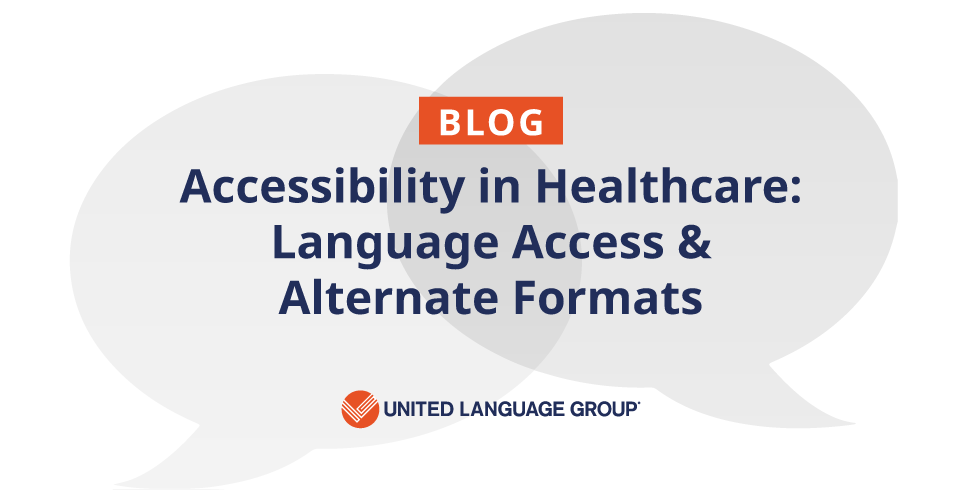As we step into 2024, healthcare organizations are embracing a pivotal role as champions of equity and accessibility. In the current regulatory environment, inclusive care and equal access to critical health information are more important than ever.
Key to these efforts is addressing two major aspects of access: language and accessibility. Driven by regulations like the CMS 2024 final rule and Section 1557 of the Patient Protection and Affordable Healthcare Act, healthcare organizations are transforming how they communicate with individuals who have language and accessibility needs. This shift is about more than checking a box for compliance, it’s about future-proofing your communications strategy and improving outcomes for vulnerable individuals.
Now is an excellent time to take a fresh look at your communication strategies. This is an opportunity to not just meet but exceed standards. Whether it’s offering information in a variety of languages or making it accessible in alternate formats like Braille, the goal is clear: to make healthcare communication as welcoming and inclusive as possible.
With this goal in mind, our experts have put together some tips and recommendations to help you offer communications that are tailored to the unique needs of the individuals and communities you’re trying to reach.
Accessibility and Alternate Formats: What You Need to Know Now
Regulations at both the federal and state levels mandate that individuals with language needs or disabilities be provided with critical information about their health and health insurance in a language and/or format they can easily understand.
Types of Accessibility
To keep individuals informed and comply with applicable laws, healthcare organizations must be able to accommodate both language access requests and alternate format requests.
LANGUAGE ACCESS
Language access means providing individuals with limited English Proficiency (LEP) the information they need in the languages of their choice. According to the Center for Immigration Studies, “21.9 percent of U.S. residents speak a foreign language at home — more than double the 11 percent in 1980.” As America becomes more culturally diverse, it becomes more important (and more challenging) to provide linguistically and culturally appropriate communication options.
Providing language access means offering written translations when required, as well as access to an interpreter by phone, video or in person. Additionally, healthcare organizations must notify individuals that these services are available by including translated statements to that effect in important plan communications.
ALTERNATE FORMATTING
According to the CDC, 1 in 4 US adults live with a disability. Individuals with certain disabilities will require alternate formatting for written documents. Alternate formatting is not “one size fits all.” Your organization needs to be prepared to accommodate a range of alternate formatting requests. For example:
- Audio: Audio files are usually produced using text-to-speech technology (TTS) and offered in an MP3 format. Some human expertise is required to ensure that listeners can accurately understand the information conveyed in the original document.
- Braille: Braille is another effective way for visually impaired people to access complicated texts. Braille is a code/writing system, not a language of its own.
- Large print: Large print is useful for people who are visually impaired, as well as those with certain cognitive conditions. Documents will often need to be reformatted from the original layout, particularly when written in foreign languages.
It’s important to note that some people may have both language access needs and alternate formatting needs. Also, keep in mind that individuals know their own needs best, and your organization should provide information in the language and format they prefer as much as possible.
Some of the relevant regulations have been strengthened to make it easier and faster for people to get information in their preferred language and/or format. To comply with the latest ruling on Section 1557 of the Affordable Care Act and the CMS Framework for Health Equity, plans should prepare to make a wider variety of documents accessible.
DIGITAL AND MULTIMEDIA ACCESSIBILITY
Embracing digital accessibility means ensuring that online content and services are inclusive and usable for everyone, including individuals with disabilities. This not only enhances user experience but also meets certain legal standards and updated guidance, including the Americans with Disabilities Act (ADA), Section 504 and Section 508 of the Rehabilitation Act, Section 1557’s proposed new rulings and CMS Framework for Health Equity.
Here are some key components of digital accessibility:
- 508 Remediation: Ensure compliance with Section 508 by adapting websites, online documentation, and software for assistive technologies and accessibility aids, making digital content user-friendly and easily accessible for individuals.
- Alternative Text for Images: Provide descriptive alternative text (“alt text”) for images to ensure that users with vision impairments can understand the content conveyed by visual elements.
- Captioning, Subtitles, and Transcripts: Offering captions, subtitles, and transcripts improves access for the deaf or hard of hearing, text format users, and non-native language speakers, making multimedia content more universally accessible.
Managing Language Access & Accessibility Needs
These regulations are intended to give healthcare organizations a framework for providing clear, accessible information to everyone. The ultimate goal is to improve outcomes by empowering individuals, no matter their language or abilities, to make well-informed healthcare decisions.
Here are some considerations to help your organization offer this access to everyone, whether they have a language need, a disability that requires alternate formatting, or both, efficiently and effectively.
Language Access and Accessibility: Proactive Strategies for Clearer Communication
By planning ahead and being proactive, you can optimize your processes to make language access and accessibility requests simpler and faster to fulfill. For most organizations, planning ahead for language access means putting together a formal language access plan.
A Language Access Plan involves assessing the needs of the people your organization serves and developing procedures to meet these needs. Having all of this in writing ensures that everyone in your organization knows what their role is when it comes to language access. And it protects your organization by demonstrating the steps you’re taking to comply with applicable regulations.
But planning for language alone isn’t enough.
While a language access plan generally focuses on the availability of language services, organizations also need to plan ahead for accessibility needs, too. Since some individuals will have both language access and accessibility needs, it makes sense to consider both types of needs at the same time. In fact, doing so can make your efforts more efficient and effective. Audit and streamline procedures for requesting translations in the most commonly spoken languages in your area, and plan ahead to offer language access and accommodation across all touchpoints. Once you understand your language population, identify your highest touch points and identify what alternate formats are most requested from the people you serve, you can get a head start on those requests and have commonly used documents immediately available in alternate formatting whenever possible.
For example, many of our clients every year decide to translate their annual enrollment documents and provide large print versions at the same time. Having these alternate formats on hand, in both English and your threshold languages, can be less time-consuming and more cost-effective.
Centralize your Language and Accessibility Requests
If you’re using different language solutions vendors for translations, interpretation services and alternate formats, you’re missing out on efficiencies from centralizing everything with a single provider.
Keep in mind that some individuals will need both language access and alternate formatting. So, what happens when an individual needs a document in Arabic, and it also needs to be in large print? If you have one vendor handle translating the copy and another vendor turns the translation into large print, this adds cost, complexity and the potential for errors. Documents that need to be in large print may also need to be reformatted, and the differences between written languages can make this even more complex.
If you have everything centralized with one vendor, you can send your documents off and get them back in whatever language, format or combination of the two you need. Plus, you save administrative time versus having to deal with multiple vendors.
Beyond Compliance: How Improving Access Improves Outcomes
Language access and accessibility aren’t just boxes to check for compliance. When you invest in improving accessibility, you’re investing in expanding access and creating better experiences for your patients and members.
It’s key to improving health equity and outcomes among people who have limited English proficiency, disabilities or both. The better they can access information about their health plan, prevention and treatments, the higher the potential for improved outcomes.
Healthcare organizations invest time and resources into creating helpful informative content to help people live longer, healthier lives. Making it accessible to as many people as possible is a logical next step.
With a stronger regulatory emphasis on language access, accessibility and health equity, tracking the requests you receive, your response times, and being able to tie your language access programs to outcomes has never been more important.
The good news is that you don’t have to do this all on your own. Finding a partner who can help you with capturing data on your language access program is a great way to prepare your organization for the increased tracking requests we expect to see in the future.
Let us tailor innovative solutions that fit the unique requirements of your organization, enhancing both access and equity for the individuals and communities you serve.
To learn more, contact us for a free consultation today.

